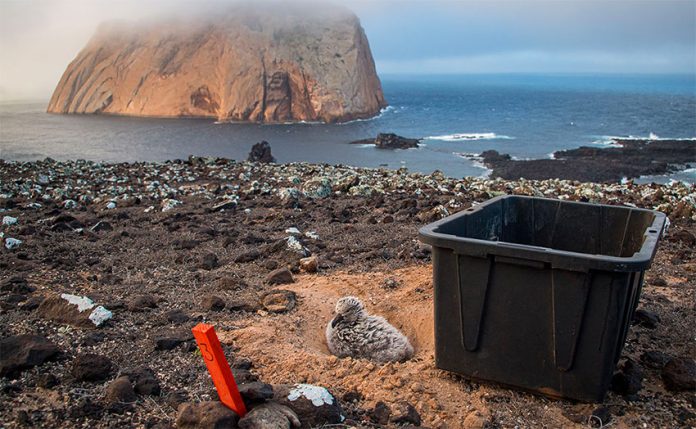An albatross has taken flight on Guadalupe Island, 241 kilometers off the west coast of Baja California, confirming the success of an audacious biological conservation project between the United States and Mexico.
The project led by Mexican nonprofit Island Ecology and Conservation Group (GECI) and U.S. nonprofit Pacific Rim Conservation aims to find a new habitat where the albatross can be safe from the rising sea levels that threaten their survival.
About 95% of the world’s black-footed albatrosses (Phoebastria nigripes) are found on the Hawaiian islands in the north Pacific Ocean. The 3-kilogram seabirds, which nest on low-lying sandy beaches, are particularly vulnerable to sea level rise and flooding: on one island a two-meter sea level rise over the next century would flood up to 91% of nests.
However, Guadalupe Island offers nesting sites on higher ground. It is also familiar territory for the high flyers who were previous residents to the island, which has become a fitting home again after conservationists have worked over the last 20 years to eradicate invasive species.
The first ascent of Snowflake — the bird that took flight on June 16 — was the culmination of a long journey: in January the young albatross was one of 21 eggs flown 6,000 kilometers on a commercial airline from Midway Atoll island. They stopped in Honolulu, Hawaii, before being transferred to San Diego, California, then to Tijuana, Baja California, before finally reaching Guadalupe Island.
In February, 18 eggs hatched on Guadalupe thanks to years of planning, dozens of permits from both countries and half a million dollars in funding from several nongovernmental organizations, not to mention the extra hurdles negotiated through the Covid-19 pandemic.
Julio Hernández Montoya, a conservation biologist at GECI, said the project was spurred on by a sense of urgency: in Hawaii the birds “were destined to drown,” he said.
“[The effort] was quite a feat … It fills us with astonishment and joy,” he added.
Eric VanderWerf, a bird biologist at Pacific Rim Conservation, admitted the plan was a bold one. “The idea [of transporting the birds across the Pacific] was a little bit wild … Doing all that in the midst of the pandemic … I still can’t believe we did it,” he said.
Despite being transferred from a tropical environment to a dry one, the birds are faring fine: “The albatross don’t care … They can do fine in either one,” VanderWerf added.
The team plans to bring 80 more black-footed albatross eggs to Guadalupe Island over the next few years.
With reports from Science Mag
